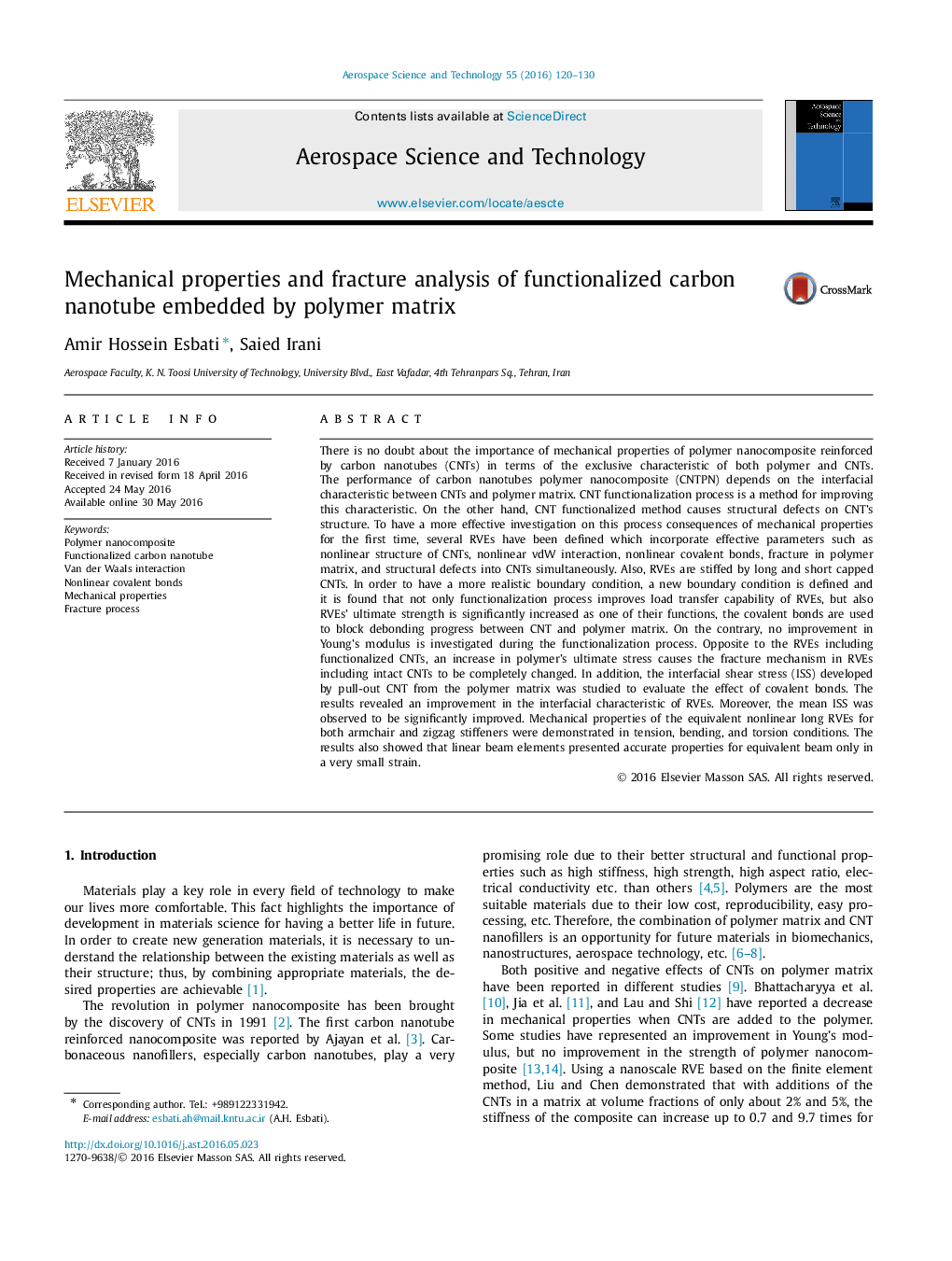| Article ID | Journal | Published Year | Pages | File Type |
|---|---|---|---|---|
| 1717547 | Aerospace Science and Technology | 2016 | 11 Pages |
There is no doubt about the importance of mechanical properties of polymer nanocomposite reinforced by carbon nanotubes (CNTs) in terms of the exclusive characteristic of both polymer and CNTs. The performance of carbon nanotubes polymer nanocomposite (CNTPN) depends on the interfacial characteristic between CNTs and polymer matrix. CNT functionalization process is a method for improving this characteristic. On the other hand, CNT functionalized method causes structural defects on CNT's structure. To have a more effective investigation on this process consequences of mechanical properties for the first time, several RVEs have been defined which incorporate effective parameters such as nonlinear structure of CNTs, nonlinear vdW interaction, nonlinear covalent bonds, fracture in polymer matrix, and structural defects into CNTs simultaneously. Also, RVEs are stiffed by long and short capped CNTs. In order to have a more realistic boundary condition, a new boundary condition is defined and it is found that not only functionalization process improves load transfer capability of RVEs, but also RVEs' ultimate strength is significantly increased as one of their functions, the covalent bonds are used to block debonding progress between CNT and polymer matrix. On the contrary, no improvement in Young's modulus is investigated during the functionalization process. Opposite to the RVEs including functionalized CNTs, an increase in polymer's ultimate stress causes the fracture mechanism in RVEs including intact CNTs to be completely changed. In addition, the interfacial shear stress (ISS) developed by pull-out CNT from the polymer matrix was studied to evaluate the effect of covalent bonds. The results revealed an improvement in the interfacial characteristic of RVEs. Moreover, the mean ISS was observed to be significantly improved. Mechanical properties of the equivalent nonlinear long RVEs for both armchair and zigzag stiffeners were demonstrated in tension, bending, and torsion conditions. The results also showed that linear beam elements presented accurate properties for equivalent beam only in a very small strain.
